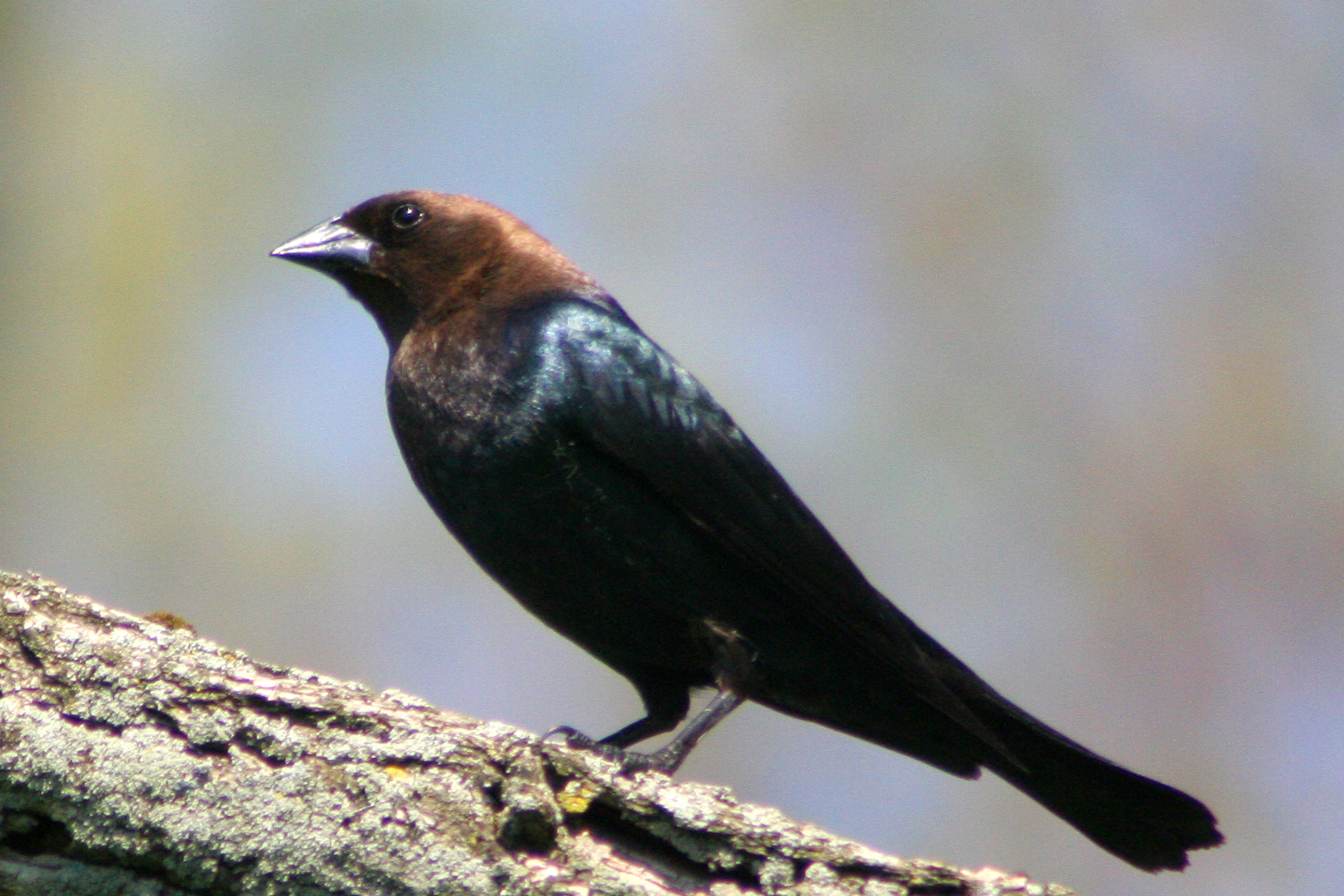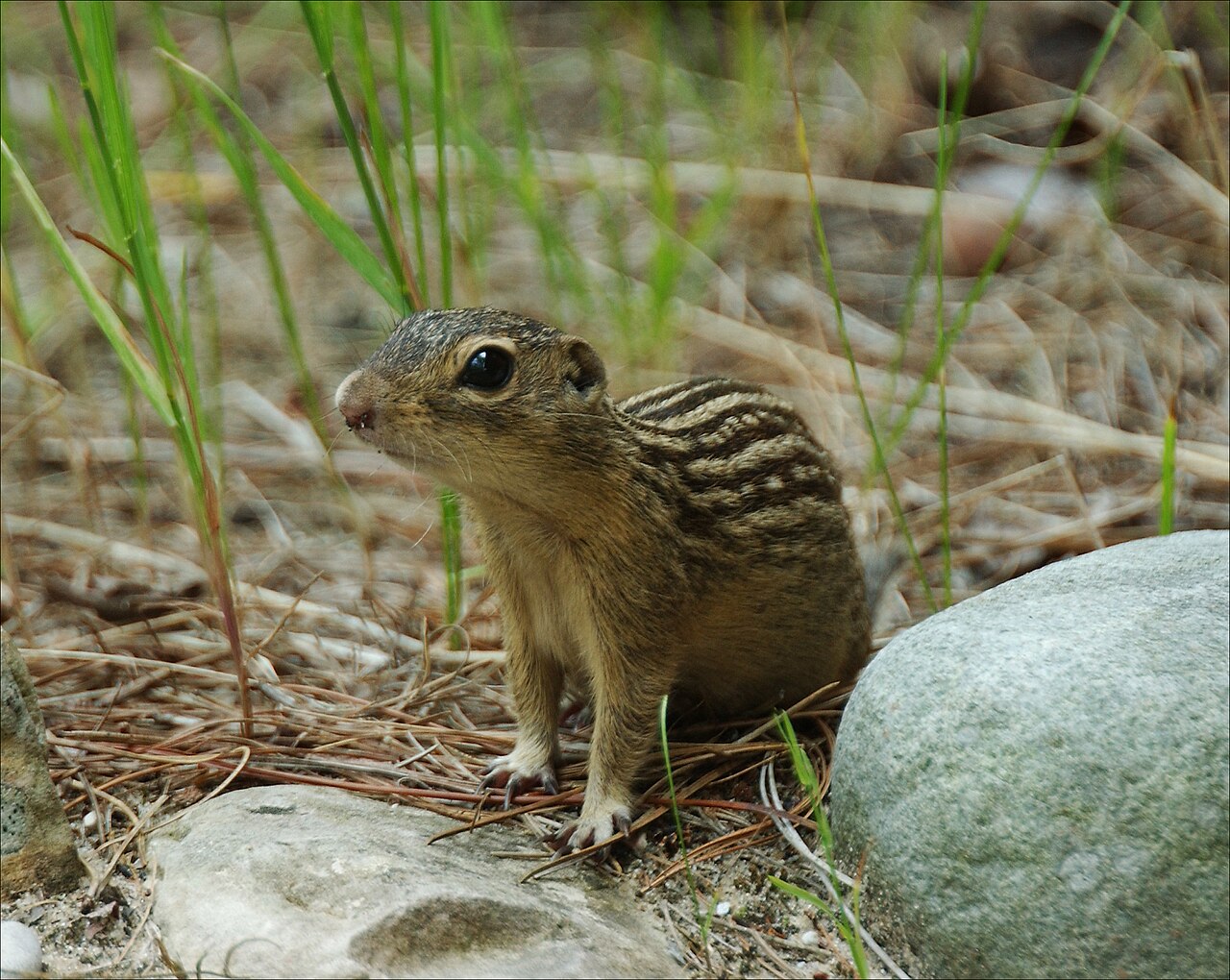| Fig. 1 織布鳥與寡婦鳥的親緣關係。圖中框起來的就是本文主角-雌性寄生織布鳥。在其上的是擬態的模型,紅寡婦鳥(雄性紅色那隻)。 |
摘要
Mimicry of a harmless model (aggressive mimicry) is used by egg, chick and fledgling brood parasites that resemble the host’s own eggs, chicks and fledglings. However, aggressive mimicry may also evolve in adult brood parasites, to avoid attack from hosts and/or manipulate their perception of parasitism risk. We tested the hypothesis that female cuckoo finches (Anomalospiza imberbis) are aggressive mimics of female Euplectes weavers, such as the harmless, abundant and sympatric southern red bishop (Euplectes orix). We show that female cuckoo finch plumage colour and pattern more closely resembled those of Euplectes weavers (putative models) than Vidua finches (closest relatives); that their tawny-flanked prinia (Prinia subflava) hosts were equally aggressive towards female cuckoo finches and southern red bishops, and more aggressive to both than to their male counterparts; and that prinias were equally likely to reject an egg after seeing a female cuckoo finch or bishop, and more likely to do so than after seeing a male bishop near their nest. This is, to our knowledge, the first quantitative evidence for aggressive mimicry in an adult bird, and suggests that host–parasite coevolution can select for aggressive mimicry by avian brood parasites, and counter-defences by hosts, at all stages of the reproductive cycle.
侵略型擬態 (aggressive mimicry) 的型式有很多種,最常見的是醫生魚與假醫生魚的例子,鳥類的話就是杜鵑將蛋寄生在別種鳥類的巢中。以鳥來說,要將蛋成功寄生需要付出很大的耗費,通常是鳥蛋的樣式或是雛鳥的乞食標記,透過侵略型擬態的方式達成寄生的目的。除了蛋與雛鳥,成體是否也存在侵略型擬態呢?
原生於非洲的寄生織布鳥 (cuckoo finch, Anomalospiza imberbis) 是會將鳥蛋寄生在同屬於非洲的褐頭鷦鶯 (tawny-flanked prinia, Prinia subflava) 的巢中,而寄生織布鳥的的雌性外貌十分類似分佈於當地非寄生姓的紅寡婦鳥 (southern red bishop, Euplectes orix)。基於物種間不太可能沒來由的具有高度相似性,而且當分佈又重疊時,自然學家心中的一些疑問就產生了:難道雌性織布鳥藉由擬態雌性紅寡婦鳥來接近褐頭鷦鶯的巢,避免被趕走,增加寄生鳥蛋的成功率嗎?
作者群提出幾個假設。首先,如果織布鳥是擬態者,那麼牠們的數量應該要低於其擬態者;其次,雌性織布鳥的外貌相似的來源是是因為擬態或是系統發生上的限制?如果是因為前者,那麼應該跟紅寡婦鳥的樣子比較接近,如果是因為後者,那麼應該會跟姊妹群的樣子比較接近;其三,如果褐頭鷦鶯無法分辨雌性織布鳥與雌性紅寡婦鳥,並且認為雄性織布鳥是種威脅,那麼將兩性的織布鳥與紅寡婦鳥同時呈現在褐頭鷦鶯面前時,應該只會排除雄性織布鳥,其他三種則不會有強烈的反應;最後,如果褐頭鷦鶯發現雌性的織布鳥擬態時,是否會回頭將外來的鳥蛋排除?
作者群分別以光學模型、系統發生學,與行為學的方式來驗證這些假設。結果顯示雌性織布鳥的數量遠少於紅寡婦鳥以及其姊妹群,羽毛的顏色也比較接近雌性紅寡婦鳥,支持雌性織布鳥外貌的擬態。行為的結果顯示比起對雌性織布鳥與紅寡婦鳥,對兩種鳥的雄性排除性更高,也就代表褐頭鷦鶯無從分辨雌性織布鳥與紅寡婦鳥。最後,當褐頭鷦鶯看到雌性織布鳥與紅寡婦鳥後,排除鳥蛋的行為比看到雄性紅寡婦鳥更加明顯。
或許是我對於鳥類的行為太不瞭解,但有意思的是整個實驗做完後發現雌織布鳥的擬態似乎至少在某些地方是無助於鳥蛋寄生的成功率,甚至可能因為雌紅寡婦鳥的關係增加被排除的風險,這還能算是侵略型擬態嗎?或是因為實驗設計的關係呢?或是擬態後的好處不在此?
希望能釣到比較瞭解這些鳥的故事的朋友,出來說說不同面向的看法,讓我們更瞭解這個文章的全貌。
原生於非洲的寄生織布鳥 (cuckoo finch, Anomalospiza imberbis) 是會將鳥蛋寄生在同屬於非洲的褐頭鷦鶯 (tawny-flanked prinia, Prinia subflava) 的巢中,而寄生織布鳥的的雌性外貌十分類似分佈於當地非寄生姓的紅寡婦鳥 (southern red bishop, Euplectes orix)。基於物種間不太可能沒來由的具有高度相似性,而且當分佈又重疊時,自然學家心中的一些疑問就產生了:難道雌性織布鳥藉由擬態雌性紅寡婦鳥來接近褐頭鷦鶯的巢,避免被趕走,增加寄生鳥蛋的成功率嗎?
作者群提出幾個假設。首先,如果織布鳥是擬態者,那麼牠們的數量應該要低於其擬態者;其次,雌性織布鳥的外貌相似的來源是是因為擬態或是系統發生上的限制?如果是因為前者,那麼應該跟紅寡婦鳥的樣子比較接近,如果是因為後者,那麼應該會跟姊妹群的樣子比較接近;其三,如果褐頭鷦鶯無法分辨雌性織布鳥與雌性紅寡婦鳥,並且認為雄性織布鳥是種威脅,那麼將兩性的織布鳥與紅寡婦鳥同時呈現在褐頭鷦鶯面前時,應該只會排除雄性織布鳥,其他三種則不會有強烈的反應;最後,如果褐頭鷦鶯發現雌性的織布鳥擬態時,是否會回頭將外來的鳥蛋排除?
| Fig. 2 織布鳥、紅寡婦鳥屬與姊妹群維達鳥屬的分佈與顏色的差異。 |
| Fig. 3 褐頭鷦鶯看到織布鳥後的警戒音與排除鳥蛋的行為結果 |
或許是我對於鳥類的行為太不瞭解,但有意思的是整個實驗做完後發現雌織布鳥的擬態似乎至少在某些地方是無助於鳥蛋寄生的成功率,甚至可能因為雌紅寡婦鳥的關係增加被排除的風險,這還能算是侵略型擬態嗎?或是因為實驗設計的關係呢?或是擬態後的好處不在此?
希望能釣到比較瞭解這些鳥的故事的朋友,出來說說不同面向的看法,讓我們更瞭解這個文章的全貌。
Wrote by Chia-Hsuan Wei













_RWD2.jpg/1280px-Common_Peafowl_(Pavo_cristatus)_RWD2.jpg)




